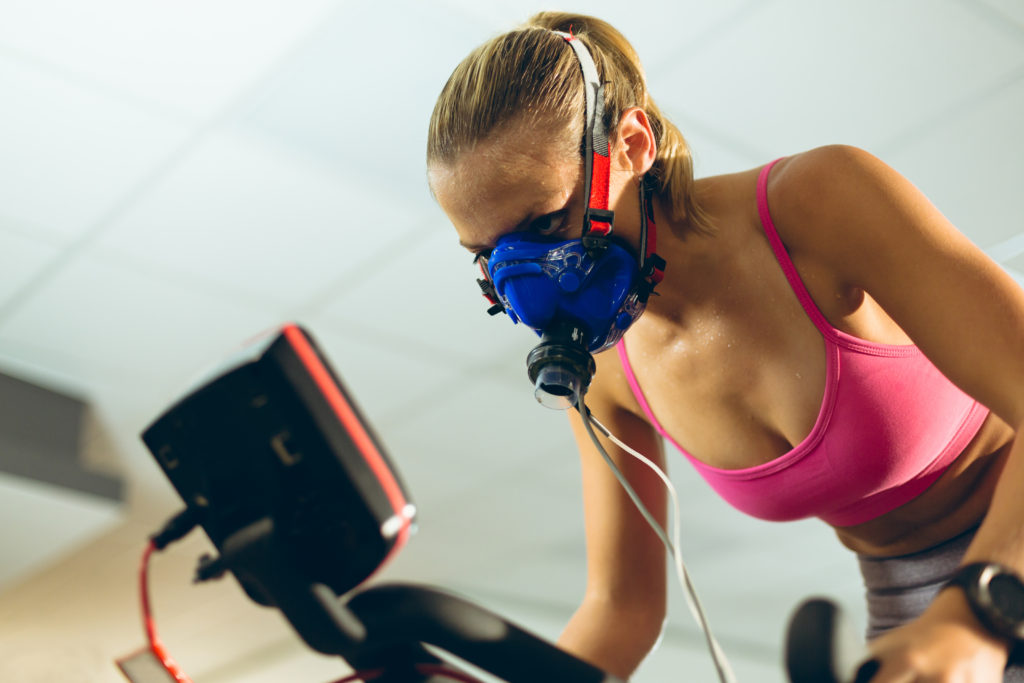
VO2 max is widely used as an indicator of cardiorespiratory fitness, and is expressed either as an absolute rate in litres of oxygen per minute (L/min) or as a relative rate in millilitres of oxygen per kilogram of body mass per minute ((mL/(kg*min)).
Accurately measuring VO2 max involves a physical effort sufficient in duration and intensity to fully tax the aerobic energy system. For cycling or running a graded exercise test is performed on a treadmill or bike with a way to control the power. For each increase in exercise intensity a specialized metabolic cart measures ventilation and oxygen and carbon dioxide concentration of the inhaled and exhaled air. VO2 max is reached when oxygen consumption remains at a steady state despite an increase in workload.
During the test, heartrate, power, and lactate values can be recorded and analyzed to set training zones that correspond to the VO2 max value.
VO2 can be increased with training but it is also thought that each individual is genetically programed at birth with a VO2 ceiling or limit. World class athletes often push up against their VO2 ceiling but for most individuals there is room for improvement. To improve the elasticity of the heart and increase max heart stroke volume or VO2 max, the heart needs to be stressed enough to create adaptation. VO2 intervals are very intense and require a lot of energy both physically and psychologically, but when done properly can be replicated enough to create adaptation and increased fitness.
